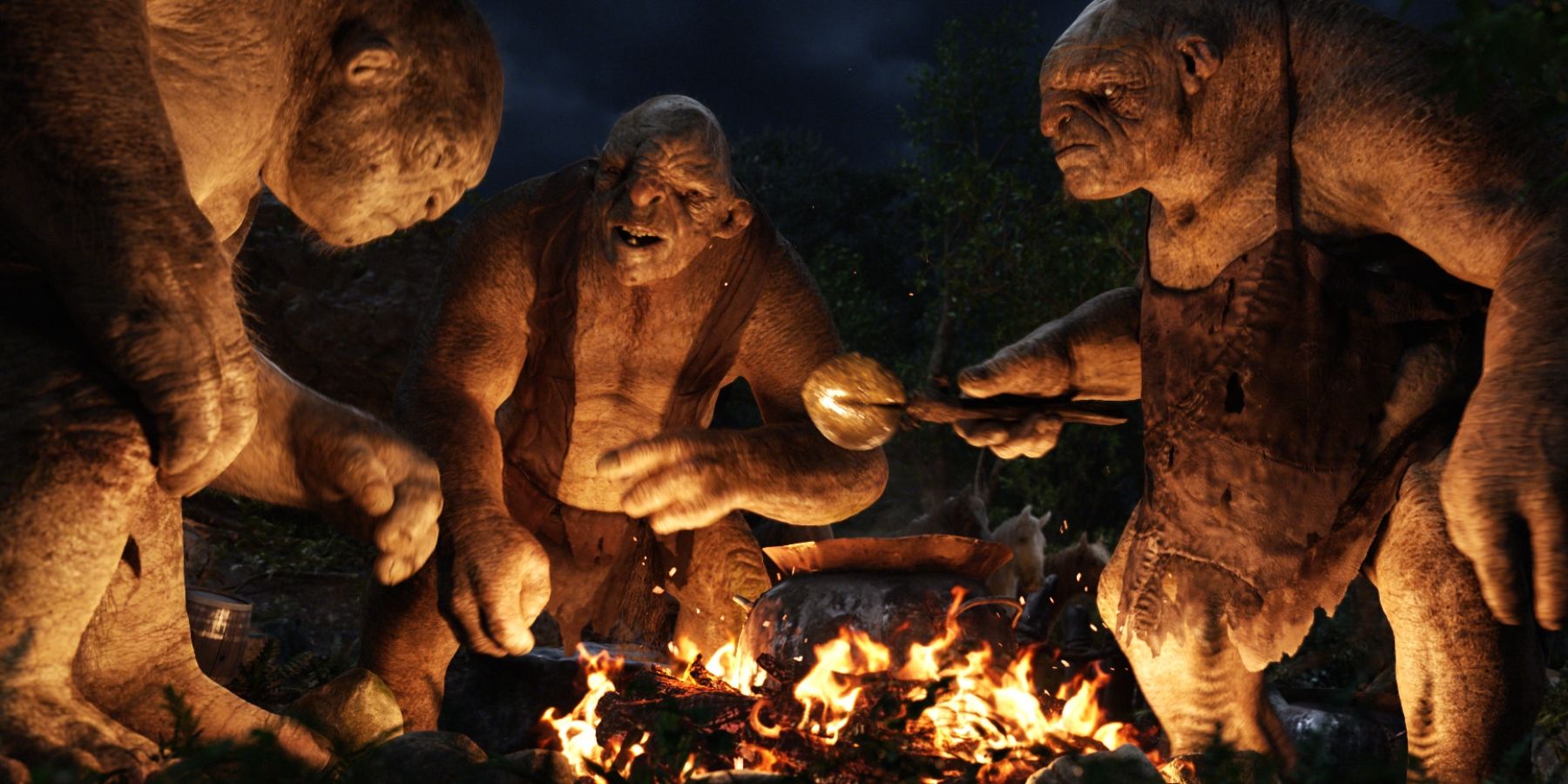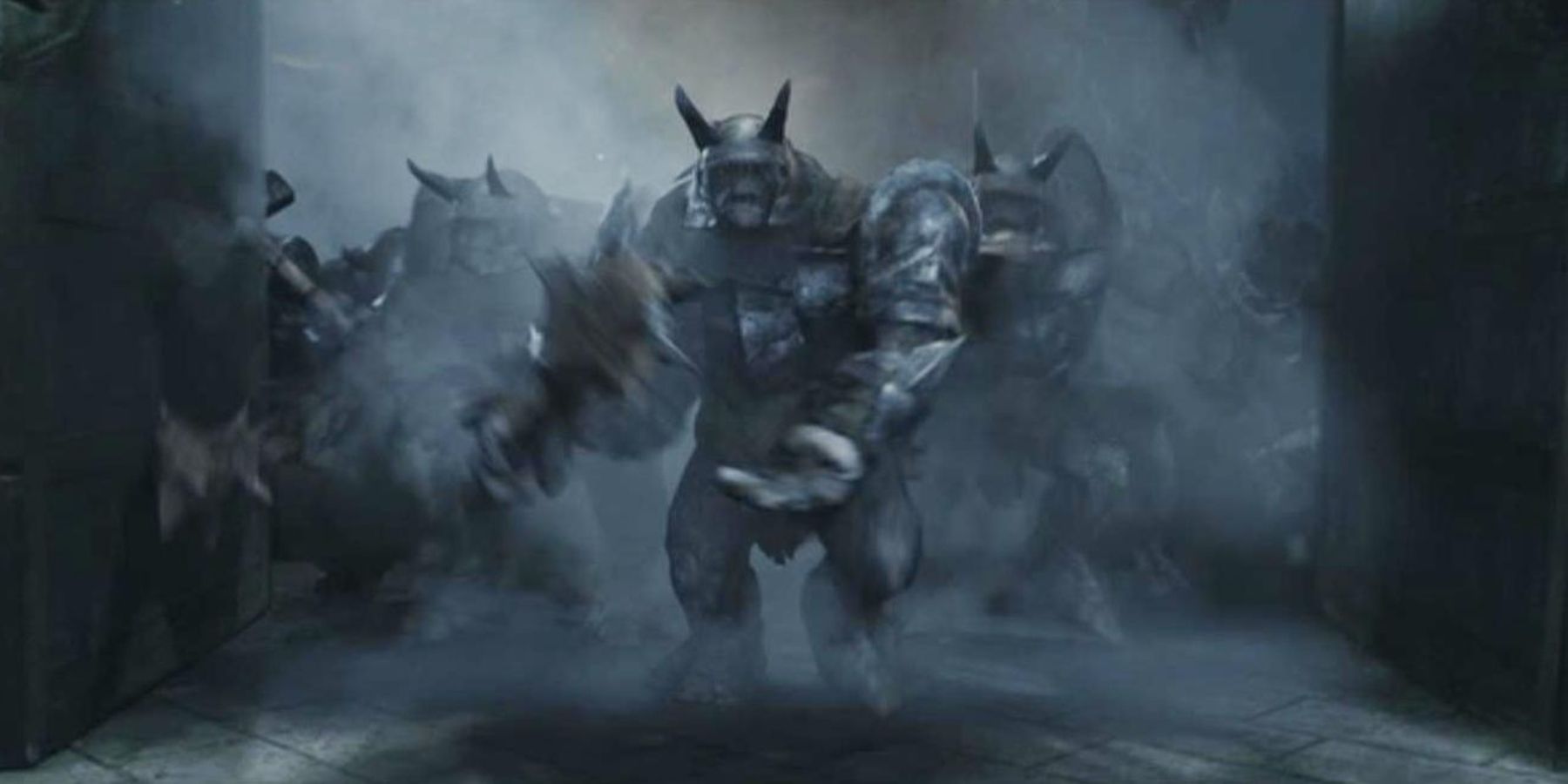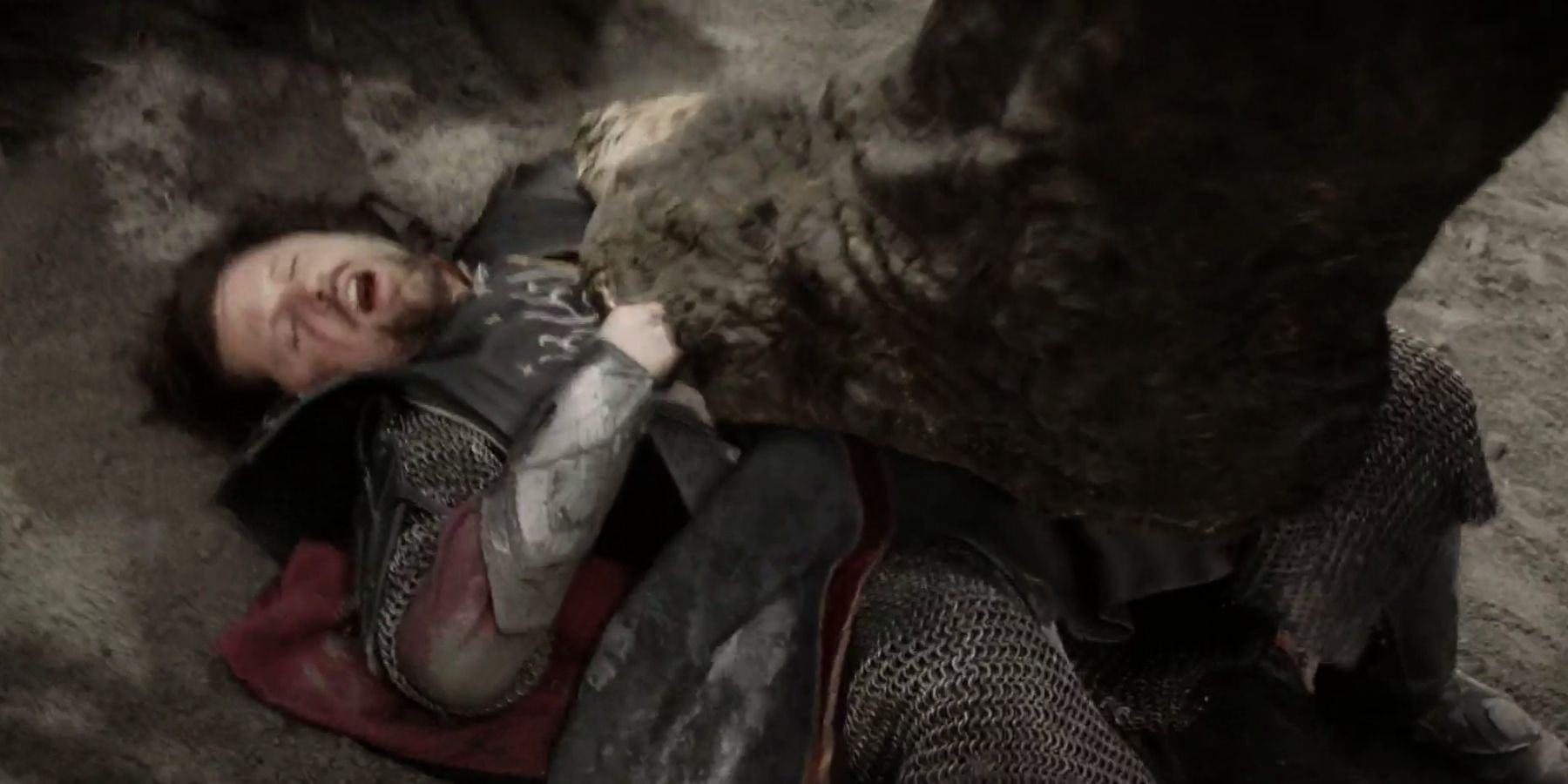During the final chapter of Book 1 of the Fellowship of the Ring, entitled ‘Flight to the Ford,’ the company of four hobbits led by Aragorn the ranger are making their way to Rivendell, having just faced the Ringwraiths in a perilous encounter at Weathertop. They are journeying through lands known as troll country, and Merry and Pippin are terrified as they find 3 trolls whilst scouting the path ahead of the others.
Aragorn, the most experienced of the group who will later become members of the fellowship, goes to check it out, and smacks a stick across one of the backs of the trolls, proving to the others that they are all made of stone. He laughs at the fear of the hobbits, saying ‘it is broad daylight with a bright sun, and yet you come back trying to scare me with a tale of live trolls waiting in this glade!’ The hobbits quickly realize their error, and recognize the trolls from the stories and poems Bilbo told them of his own adventures 60 years prior.
In The Hobbit films, the audience sees the three trolls caught out in the rising sun as they are distractedly arguing over the best way to cook the host of 13 dwarves and Bilbo himself, whom they have captured. The trolls in the glen are the very same ones from that moment, and are subsequently harmless, though Pippin still eyes them with suspicion ‘wondering if some magic might not suddenly bring them to life again.’
But if these trolls were so suddenly turned to rock after the briefest encounter with daylight, why is it that there are many other trolls that appear in the trilogy, who seem fine to stroll around in mid-morning? One such band of trolls who are sun-resistant are those who can be seen wielding the battering rams at the siege of Minas Tirith. They manage to break through the doors, and are shown battling the Gondorian soldiers with clubs and shields. They look very similar in appearance to the Cave-troll who attacks the company in the Mines of Moria, alongside a scuttling hoard of orcs in the underground tunnels, although of course there is no daylight in the long dark of the mines, so it is hard to say how this troll might have endured the illumination of noon.
There are two variations to the answer, and both are accurate. The first is that Tolkien, the writer of the books, was raised as a Catholic, and therefore had a particular connection to the ideas of souls. He decided to make some changes to the trolls from The Hobbit to The Lord of the Rings because he felt that the trolls in his earlier works, who possessed the intelligence of speech, and the representation of familial bonds, were too human, and therefore too likely to have a soul. He wanted the beasts in his later works to feel more like animals, without the same kind of consciousness.
In order to account for the changes he made, he created a thread that becomes the second answer throughout his works. And that is to say that the later trolls we see, who are adapted to daylight, are a different species of troll, bred specifically to the evil Lord Sauron to do his bidding. These trolls are more aggressive, muscular and agile, and can survive any time of day ‘as long as Sauron holds sway over them.’
This makes sense, as this type of trolls (known in the common tongue to be called Olog-Hai) are seen in several ways in the service of the dark lord throughout the trilogy, and in the Battle of the Five Armies in The Hobbit films. Some examples include when they are hooked up to a lever that acts as the opening mechanism of the Black Gates of Mordor, in which their sheer strength and size is the only thing strong enough to push the heavy machinery to welcome the soldiers inside, and in the battle outside of the gates in the third film, in which Aragorn is nearly crushed beneath one of their violently stomping feet. The troll is distracted in the nick of time however, when Frodo drops the ring into Mount Doom, and the Eye of Sauron lets out a horrifying shriek that momentarily ceases the struggle.
Most of the Trolls who were present at the great battles were thought to have died in the fighting or fled back to the mountains and the hills. They are rarely seen in the Fourth Age of Middle Earth, once the kingdoms have reunited, and the peoples have returned to days of peace.



